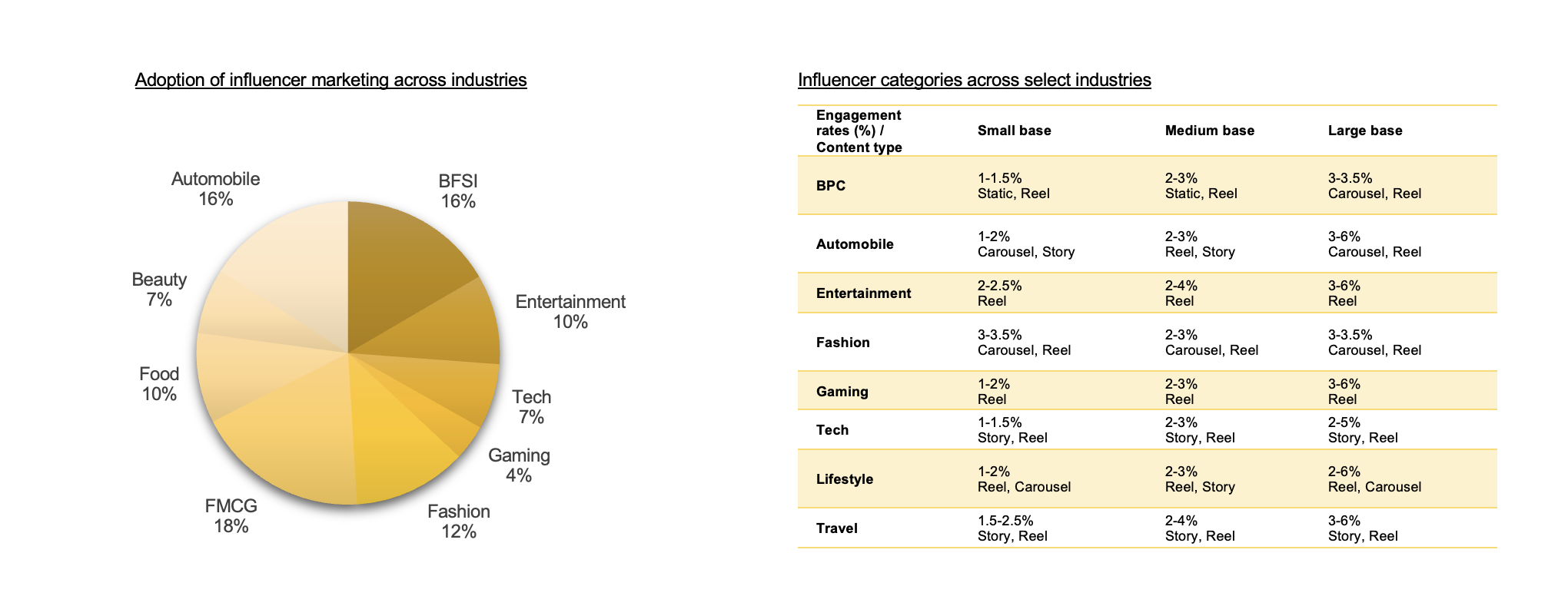Influencer marketing has experienced an exciting evolution over the years. It has changed the way businesses and brands engage with their target audiences, licensing companies to extend their reach to the masses. This method of marketing is a drastic withdrawal from the traditional monologue approach, wherein it allows brands to create interesting narratives that resonate well with digital platforms and create a multiplier effect on the size of the consumer set that is being reached out to. We believe, we are still at a very adolescent stage in the lifecycle of this mammoth of a market and going forward as we look into the next 10 years, the market is expected to be bigger in size and much formalized. Now, let us delve a bit deeper.
Some global perspectives to begin with…Influencer marketing industry is expected to grow to ~$24 Bn by 2025. As per a recent survey done amongst ~3000 marketing agencies, brands and other relevant professionals regarding the current state of influencer marketing, of the existing influencer platforms, TikTok continues to be the most common channel used by brands engaging with influencer marketing. From a spend perspective, ~70% of the respondents intend to spend as high as ~30-35% of the marketing budget on influencer marketing. Although most brands spend <$50k on influencer marketing, ~15% spend >$500k. Another feature that has popped up in the last two years is usage of AI/ML for influencer marketing which becomes particularly important for influencer discovery.
When it comes to India, with ~80Mn content creators, the internet economy anticipates influencer marketing expenditures to exceed ~$3Bn by 2030. Much of these creators are video streamers and influencers (including English language-first creators), with over 7,000 YouTube channels that count 1Mn+ subscribers — a 50% Y-o-Y leap (highest in the world). They appeal to a wide range of global audiences, especially educational content.
On the demand side, adoption of influencer marketing across industries is fairly dispersed with FMCG sector leading the pack with ~18.5%, followed by BFSI and Automobile. Within these industries, influencer categories are further sub segmented basis the type of content, user base and engagement rate. Instagram was the most preferred platform for brands at 73.6%, followed by Youtube with 17%. These two platforms are generally preferred by brands because they have a larger user base and engagement percentages as compared to other platforms. Linkedin and Twitter were at ~4%. Last but not the least, due to lack of audience interaction and reach, blog posts are the least preferred platforms for influencer marketing at 2%.


Another aspect of rising impact of influencer marketing is the high social media usage in rural India which also serves as a growing channel to enhance brand awareness and social equity. This forms a vital aspect of an effective marketing strategy for a brand/business. The content produced by these influencers has a colossal impact on the customer’s buying behaviour – content in the categories of entertainment, lifestyle, fashion and food are expected to drive consumer purchases.
The influencer space is an aspirational one as the idea of engagement sustains on familiarity and relatedness.
In our view, there are certain logical reasons why brands opt for such mode of marketing:-
- Influencer marketing attracts high quality customers – possibility of buying high margin products and add-ons
- Better ROIs relative to other modes of marketing
- Influencer marketing success = conversions / sales i.e. the optimal way to measure influencer marketing ROI is by using a metric that measures one’s campaign’s goals
- Influencer discovery and communication
- Ease of scalability relative to social activity using official accounts

